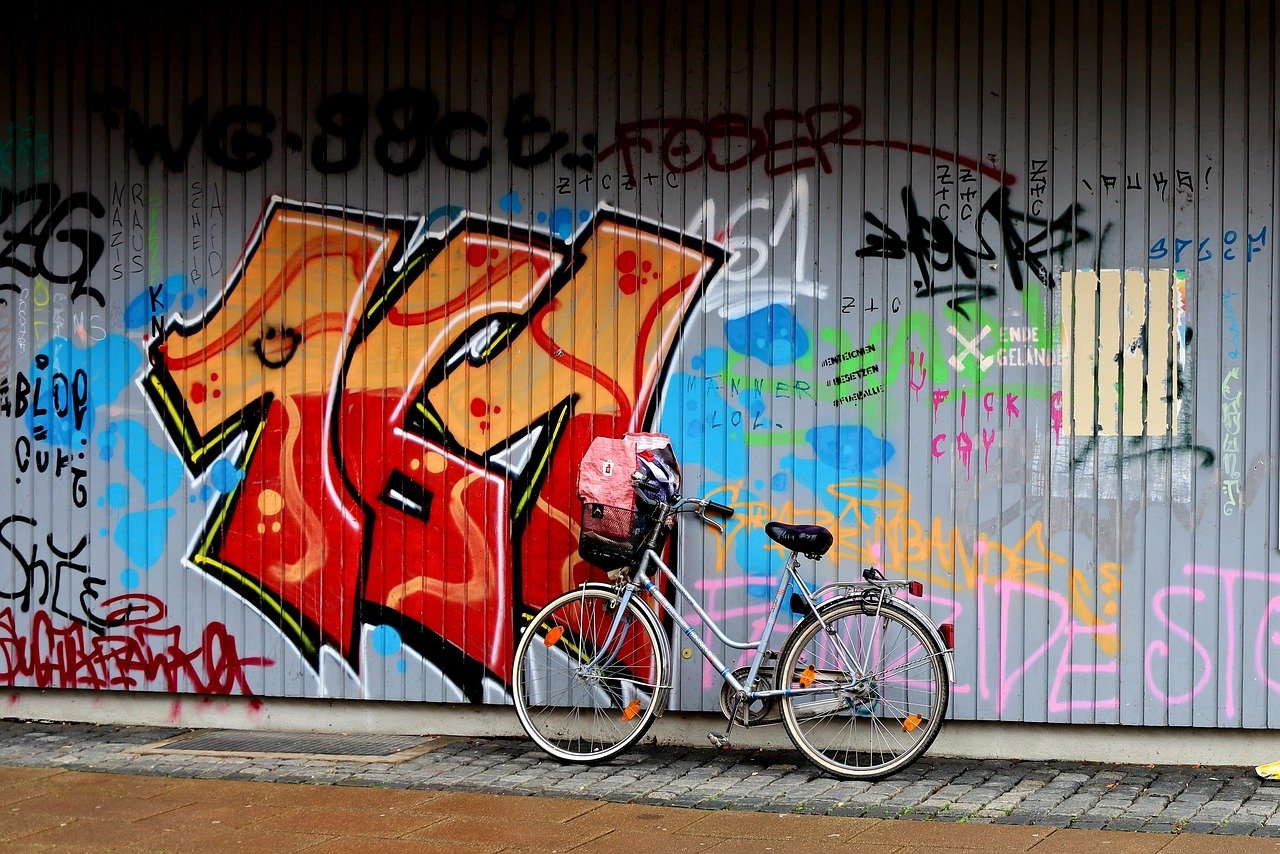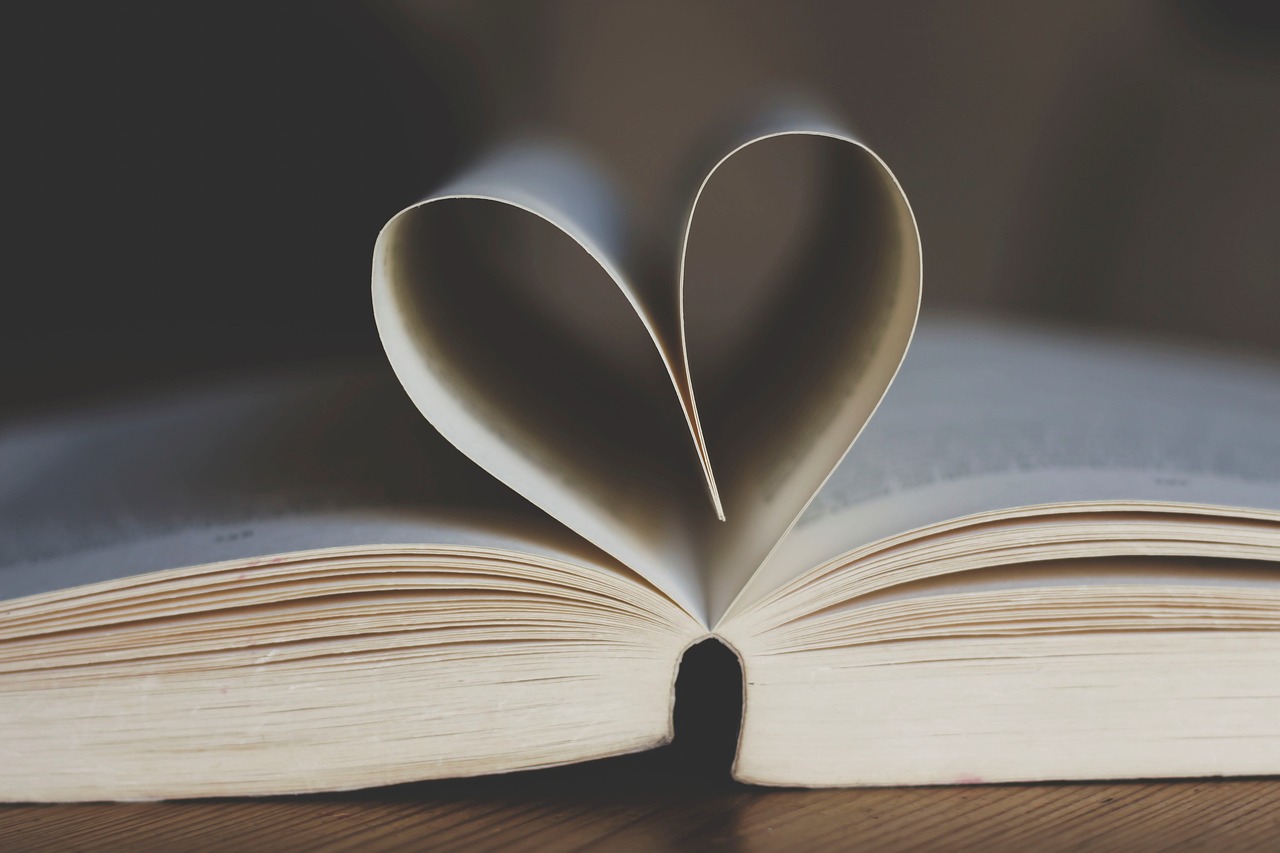Use Torn Pages: Upcycling Old Books
Have you ever looked at a pile of old books and thought they were destined for the trash? Well, think again! Upcycling old books, especially those with torn pages, can be a delightful and creative endeavor that breathes new life into forgotten literature. Imagine transforming a weathered novel into a stunning piece of art or a functional item that adds a unique touch to your home. In this article, we will explore the various ways you can repurpose these literary treasures, highlighting the benefits of upcycling and providing inspiring project ideas that will ignite your creativity. So, let’s dive into the world of torn pages and discover how to turn them into something extraordinary!
Upcycling old books is not just a trend; it's a movement that promotes sustainability and creativity. By choosing to repurpose these discarded materials, you are actively participating in reducing waste and minimizing your environmental footprint. Think about it: every book that you upcycle is one less book that ends up in a landfill. This act of transformation not only helps the planet but also fosters a sense of personal satisfaction. There’s something incredibly rewarding about taking something that was once considered useless and turning it into a functional or decorative piece. It's like giving a second chance to a story that was almost forgotten!
Now that we understand the benefits, let’s explore some exciting artistic projects that utilize torn pages. The possibilities are endless, and you can create everything from wall art to decorative items that showcase your personal style. Whether you’re an experienced crafter or just starting out, these projects will inspire your next DIY adventure using old book pages. Not only will you be creating beautiful pieces, but you’ll also be telling a story through your art, making each creation unique and meaningful.
Transforming torn pages into stunning wall art can significantly enhance your home decor. Imagine your living room adorned with a beautiful collage of pages from your favorite books, each piece reflecting your personality and artistic vision. To create these masterpieces, you can use various techniques such as decoupage, framing, or even creating 3D effects with layered pages. The beauty of this project lies in the freedom to express yourself. You can choose to stick to a particular color scheme or theme, or you can mix and match different styles to create a more eclectic look.
Framed collages made from torn book pages can add a touch of sophistication to any room. Start by selecting pages that resonate with you—perhaps a passage that inspires you or illustrations that catch your eye. Once you have your pages, arrange them in a way that feels balanced and visually appealing. Use a sturdy frame to protect your artwork while allowing it to shine. This project not only beautifies your space but also serves as a conversation starter, inviting guests to ask about the stories behind your art.
Crafting garlands and banners from old book pages is an easy way to add charm to celebrations. Whether it’s a birthday party, a wedding, or just a cozy gathering, these decorations will surely impress your guests. To create a garland, simply cut the pages into fun shapes, such as hearts or stars, and string them together using twine or ribbon. Hang them across walls, doorways, or even from the ceiling for a whimsical touch. With just a bit of creativity, you can transform any event into a literary-themed celebration!
Old books can be transformed into practical items that serve a purpose. Why not turn those tattered pages into something you can use every day? From bookmarks to storage boxes, the options are plentiful. Imagine pulling out a beautifully crafted bookmark made from a page of your favorite novel every time you pick up a book. Not only does it serve a function, but it also keeps the spirit of the book alive in your daily life. Blending utility with creativity is what makes upcycling so special!
Upcycled book projects make thoughtful, personalized gifts that show you care. Instead of purchasing generic gifts, why not create something unique that showcases the beauty of old book pages? This section will share ideas for crafting presents that are not only beautiful but also carry a story. After all, a gift that has a personal touch is always more meaningful!
Bookmarks and notebooks made from torn pages offer a literary touch to everyday items. They are practical gifts that book lovers will cherish. To craft a bookmark, simply cut a page into a desired shape, laminate it for durability, and add a decorative ribbon for flair. For notebooks, you can bind several pages together, using covers made from sturdier cardboard or even more pages from the book. These gifts are not only functional but also celebrate the love of reading!
Using old book pages for greeting cards and wrapping paper adds a creative flair to gift-giving. Imagine the delight on a friend’s face when they receive a card adorned with beautiful text or illustrations from a classic novel! To make greeting cards, fold pages into the desired size, decorate with additional embellishments, and write a heartfelt message inside. For wrapping paper, simply use larger pages to wrap gifts, creating a unique presentation that stands out. These thoughtful touches convey a special message and show that you put effort into your gift.
Q: What types of books are best for upcycling?
A: Any old or damaged books can be used, but consider choosing those with interesting illustrations or text that resonate with you.
Q: Can I use any type of adhesive for my projects?
A: Yes, but it's best to use craft glue or decoupage medium for a clean finish and to ensure the pages adhere well.
Q: Are there any books I should avoid using for upcycling?
A: It's best to avoid rare or valuable books unless you're willing to part with them, as upcycling can permanently alter them.

Benefits of Upcycling Books
Upcycling old books is more than just a trendy craft; it's a powerful way to make a positive impact on our environment while igniting our creativity. When you think about it, how many books have you stuffed away in a dusty corner, their pages yellowing with neglect? Instead of letting them fade into oblivion, why not breathe new life into them? Not only does this practice help to reduce waste, but it also allows you to engage in a fulfilling creative process that can be incredibly rewarding.
One of the most significant environmental advantages of upcycling books is the reduction of waste. By repurposing materials that would otherwise end up in landfills, you're contributing to a more sustainable future. Did you know that paper waste is one of the largest contributors to landfill mass? By turning these forgotten tomes into something beautiful and functional, you’re not just saving trees; you’re also reducing your carbon footprint. This act of creativity can ripple through your community, inspiring others to think twice before tossing their own books aside.
On a personal level, the satisfaction derived from transforming discarded materials into unique art pieces is unparalleled. There's something magical about taking a torn page and turning it into a stunning collage or a charming bookmark. It’s like giving a second chance to something that was once cherished. The act of creating can be therapeutic; it allows you to express your emotions and thoughts in a tangible form. You might even find that the process of upcycling becomes a form of meditation, where your mind is focused solely on the task at hand, freeing you from daily stressors.
Moreover, upcycling can also foster a sense of community. When you share your creations, whether through social media or local craft fairs, you inspire others to join in on the fun. Imagine hosting a workshop where friends gather to transform their old books into art, sharing ideas and techniques along the way. This collaborative spirit not only strengthens bonds but also spreads the message of sustainability and creativity. In essence, upcycling books can turn into a movement, one that celebrates both the past and the future.
In summary, the benefits of upcycling books extend far beyond the act itself. From environmental advantages to personal satisfaction and community building, this creative endeavor is a win-win for everyone involved. So, the next time you come across an old book, ask yourself: what new life can I give this story? The possibilities are endless!

Creative Book Art Projects
Have you ever looked at a stack of old books and felt a twinge of sadness? Those worn pages, once filled with stories that captivated readers, now sit forgotten on a shelf. But what if I told you that those torn pages could be transformed into something magical? Upcycling old books is not just a way to declutter; it’s a chance to unleash your creativity and breathe new life into forgotten literature. In this section, we will explore various artistic projects that utilize these torn pages, turning them into stunning pieces of art that can enhance your home decor or serve as delightful gifts.
One of the most exciting aspects of working with torn book pages is the ability to create unique wall art. Imagine transforming those pages into a beautiful collage that reflects your personal style. You can mix and match different texts, fonts, and illustrations to create a piece that tells a story of its own. The beauty of this project lies in its versatility; whether you prefer a minimalist design or a vibrant explosion of color, the choice is entirely yours. You can even incorporate other materials, such as paint, fabric, or photographs, to add depth and texture to your creation.
When it comes to creating wall art from torn pages, one popular method is to make framed page collages. These collages can add a touch of sophistication to any room, serving as a conversation starter for guests. To get started, gather your materials: an old frame, some torn pages, and glue. Begin by arranging the pages within the frame, experimenting with different layouts until you find one that pleases your eye. Once you're satisfied, glue the pages down and reassemble the frame. Hang your new artwork in a prominent place, and watch how it transforms the space.
Another creative project is to craft page garlands and banners from old book pages. These decorative pieces are perfect for adding a whimsical touch to celebrations, such as birthdays or holidays. All you need are some torn pages, string or twine, and scissors. Cut the pages into shapes like triangles or circles, and then punch holes at the top of each piece. Thread the string through the holes, spacing them out evenly, and hang your garland as a festive decoration. This simple project is not only fun but also a great way to engage children in the art of upcycling.
As you can see, the possibilities are endless when it comes to using old book pages for creative projects. Whether you choose to make wall art, garlands, or other decorative items, the act of transforming these pages into something new is incredibly satisfying. You’re not just recycling; you’re creating a piece of art that reflects your personality and values. So, gather those old books, let your imagination run wild, and start crafting your own unique book art projects today!

Wall Art Creations
Transforming torn pages from old books into stunning wall art can be a delightful way to enhance your home decor while expressing your artistic flair. Imagine walking into a room adorned with pieces that not only tell a story but also showcase your creativity. The beauty of using book pages lies in their unique textures and printed words, which can add depth and character to your walls. You might be wondering how to get started, and the good news is that creating wall art from torn pages is both simple and rewarding!
One popular method is to create framed collages. Gather a variety of torn pages, selecting ones that resonate with you—perhaps a favorite quote, an intriguing illustration, or even a beautiful pattern. Arrange these pieces on a canvas or inside a frame, layering them to create visual interest. Don’t be afraid to play around with different shapes and sizes; the more eclectic, the better! Once you’re satisfied with your arrangement, secure the pages using a glue stick or mod podge, and let it dry completely before hanging it on your wall. This not only provides a personal touch to your space but also serves as a conversation starter for guests.
Another exciting project is to create page garlands and banners. These decorative pieces are perfect for adding charm to celebrations or simply brightening up your everyday environment. To make a garland, cut the pages into uniform shapes—think triangles or circles—and string them together using twine or ribbon. Hang them across a wall or above a doorway to create a whimsical atmosphere. You can even personalize them for occasions like birthdays or holidays by incorporating themed pages or colors!
For those who enjoy a bit of challenge, consider experimenting with 3D wall art. This involves folding, rolling, or layering the pages to create a more dynamic piece. For instance, you could roll pages into tubes and arrange them in a circular pattern on a canvas, or fold them into origami shapes to create a stunning focal point. The possibilities are endless, and the result is sure to impress!
Lastly, don’t forget about the power of mixed media. Combine your torn book pages with other materials like paint, fabric, or even photographs to create a truly unique piece of art. This approach allows you to blend different textures and colors, resulting in a wall art creation that is not only visually appealing but also deeply personal.
In summary, the world of wall art creations using torn pages from old books is rich with possibilities. Whether you choose to create framed collages, garlands, 3D art, or mixed media pieces, each project offers a chance to breathe new life into forgotten literature while adding a touch of your personality to your home. So, gather those old books, unleash your creativity, and let your walls tell a story!
Q: What types of old books are best for upcycling?
A: Look for books that have interesting illustrations, typography, or stories that resonate with you. Books that are damaged or no longer read can be perfect candidates for upcycling.
Q: How do I preserve the pages once I’ve created my art?
A: To preserve your art, consider using a sealant like mod podge or a clear acrylic spray. This will help protect the pages from moisture and fading.
Q: Can I sell my upcycled book art?
A: Absolutely! Many people appreciate unique, handmade items, and upcycled book art can be a great addition to craft fairs, online shops, or local markets.

Framed Page Collages
Creating framed page collages from torn book pages is not just an art project; it's a journey into the world of creativity and nostalgia. Imagine taking a piece of literature that has seen better days and transforming it into a stunning piece of art that not only decorates your wall but also tells a story. The beauty of these collages lies in their ability to combine various elements—text, images, and colors—into a cohesive visual experience. You can use pages from novels, poetry collections, or even old encyclopedias, allowing your imagination to run wild.
To start your framed page collage, gather your materials. You'll need a selection of torn pages, a frame that suits your style, scissors, glue, and a sturdy backing material like cardboard. The first step is to decide on a theme or color palette. Do you want something whimsical, vintage, or perhaps a blend of both? Once you have a vision, begin arranging the torn pages on your backing material. This is where the fun begins! You can layer the pages, overlap them, or even cut them into shapes to create depth and interest.
When it comes to arranging your pages, think about the flow and balance of the composition. You might want to create a focal point in the center or have a more scattered, free-form design. As you work, consider the text and images on the pages. Perhaps you have a favorite quote that you want to highlight, or an illustration that can serve as a centerpiece. Play around with different layouts until you find one that resonates with you.
Once you’re satisfied with the arrangement, it’s time to glue everything down. Apply a thin layer of glue to the back of each page and press it firmly onto the backing material. Make sure to use a glue that dries clear to keep the aesthetic clean. After everything is glued down, let it dry completely before placing it in the frame. This step is crucial, as it ensures that your artwork holds together beautifully.
Finally, frame your collage and hang it up! Choosing the right frame can enhance the overall look of your artwork. A rustic wooden frame can add a touch of warmth, while a sleek modern frame can give it a contemporary feel. Regardless of your choice, your framed page collage will surely become a conversation starter, evoking curiosity and admiration from guests. It’s a fantastic way to showcase your creativity and give old book pages a new lease on life.
- What types of books work best for collages? Any old book can work, but those with interesting illustrations or unique text layouts tend to be the most visually appealing.
- Can I use books that are in good condition? While you can, remember that the goal of upcycling is to give new life to materials that might otherwise be discarded.
- How do I choose a frame? Consider the style of your decor and the colors in your collage. A frame should complement, not overpower, your artwork.

Page Garlands and Banners
Creating garlands and banners from torn book pages is not just a fun craft; it’s a way to breathe new life into forgotten literature while adding a personal touch to your celebrations. Imagine hanging a beautiful garland made from pages of an old novel or a classic poetry book, transforming your space into a whimsical wonderland. These decorative pieces can be customized for any occasion, whether it’s a birthday party, a wedding, or simply to brighten up your home.
The process of making these garlands is surprisingly simple and incredibly rewarding. Start by gathering your materials. You’ll need some old book pages, scissors, string or twine, and a glue stick or tape. The beauty of using book pages is that you can choose pages with illustrations, interesting typography, or even pages that resonate with a particular theme or color palette you have in mind.
To begin, cut the pages into various shapes. You can opt for classic triangles, circles, or even more intricate designs like hearts or stars. The key here is to let your creativity flow. Once you have your shapes cut out, it’s time to start assembling your garland. Lay out the shapes on a flat surface to determine the arrangement that appeals to you the most. Once you’re satisfied with the layout, use the glue or tape to affix the shapes to the string, leaving some space between each piece to allow the garland to drape nicely.
For added flair, consider embellishing your garland with other materials. You can incorporate ribbons, beads, or even dried flowers to enhance the aesthetic. The combination of textures and colors will create a stunning visual effect that captivates anyone who walks by. Hang your finished garland across a mantel, along a wall, or even from the ceiling to create an enchanting atmosphere.
Not only do these garlands serve as beautiful decorations, but they also spark conversations. Guests are often intrigued by the unique materials and may even ask about the stories behind the pages you’ve chosen. This opens up opportunities to share your love for literature and the importance of upcycling in today’s world.
In summary, crafting page garlands and banners is an enjoyable way to repurpose old books while adding a unique touch to your decor. The process is straightforward, allowing you to unleash your creativity and personalize your space. So, the next time you find an old book with torn pages, remember that it can be transformed into something beautiful that brings joy to your home or your next gathering.
Q1: What types of books are best for making garlands and banners?
A1: Any old book can work, but look for those with interesting illustrations or text. Children’s books, poetry books, or vintage novels often have beautiful pages that make great decorations.
Q2: Can I use colored paper instead of book pages?
A2: Absolutely! While book pages add a unique literary touch, colored paper can also create vibrant and eye-catching garlands. Feel free to mix and match!
Q3: How can I make my garland more durable?
A3: To enhance durability, consider laminating the cut shapes or using heavier paper. Additionally, using a sturdy twine or string will help your garland hold up longer.
Q4: Are there specific occasions where these garlands are particularly suitable?
A4: Page garlands are versatile and can be used for various occasions, including birthdays, weddings, holidays, or even as everyday home decor. Their charm fits almost any celebration!

Functional Items from Old Books
When you think about old books, you might picture dusty shelves and forgotten stories, but what if I told you they could become functional treasures in your home? Yes, you heard that right! Old books, especially those with torn pages, can be transformed into a variety of practical items that not only serve a purpose but also tell a story. Imagine sipping your morning coffee from a mug that has a handle made from the spine of a classic novel, or jotting down your thoughts in a notebook crafted from the pages of a beloved children’s book. The possibilities are endless!
Let’s dive into some amazing projects that blend utility with creativity. One popular option is creating book page coasters. These coasters can protect your surfaces while adding a literary flair to your coffee table. To make them, simply cut out squares from the pages of an old book, adhere them to a cork base, and seal with a waterproof finish. Voila! You now have coasters that spark conversation and showcase your love for literature.
Another fantastic idea is to create a book safe. This project is perfect for those who want to keep their valuables hidden in plain sight. You can take a thick book, cut out a section of the pages, and create a secret compartment. Not only does this give new life to an old book, but it also adds a touch of mystery to your home. It’s like having a personal treasure chest that’s both stylish and functional!
If you’re looking for something that can help organize your space, consider making a book page organizer. You can use the covers of old books to create unique storage solutions for your desk or craft area. Simply attach a few book covers together to form a multi-pocket organizer that can hold everything from pens to craft supplies. This not only keeps your space tidy but also serves as a charming decorative piece.
To inspire your creativity, here’s a quick overview of some functional items you can create from old books:
| Item | Description |
|---|---|
| Book Page Coasters | Protect your surfaces with stylish coasters made from book pages. |
| Book Safe | A hidden compartment in a book to store valuables. |
| Book Page Organizer | A unique storage solution for office supplies or craft materials. |
As you can see, transforming old books into functional items is not only a great way to upcycle but also a fantastic way to express your creativity. Each piece you create carries a story and a sense of nostalgia, making your home feel even more inviting. So, gather those old, torn books and let your imagination run wild!
Now, before we wrap up, let’s address some frequently asked questions about upcycling old books:
- Can I use any old book for these projects? Yes, as long as the book has pages that can be torn or cut without compromising the overall structure too much.
- What tools do I need to start? Basic crafting supplies like scissors, glue, and a cutting mat are essential. Depending on the project, you might need additional materials like cork or frames.
- Are there any books I should avoid? It’s best to avoid rare or valuable books, as they might be better preserved than repurposed. Stick to those that are already damaged or have little to no monetary value.

Gift Ideas Using Upcycled Pages
When it comes to gift-giving, there's something truly special about presenting a gift that has a personal touch. Upcycled book projects not only allow you to showcase your creativity but also provide a unique way to express your sentiments. Imagine the joy on your loved ones' faces when they unwrap a gift made from the pages of a cherished book! This section is packed with delightful ideas that will inspire you to transform old book pages into thoughtful gifts that stand out.
One of the simplest yet most elegant gifts you can create is a bookmark. Picture this: a beautifully crafted bookmark made from a torn page of a classic novel. Not only does it serve a practical purpose, but it also carries a piece of literary history. To make it, cut a page into a rectangular shape, and consider adding a decorative ribbon or a small charm at the end to give it that extra flair. This way, every time your friend opens their favorite book, they'll think of you!
Another fantastic idea is to create notebooks from old book pages. You can use the covers of hardback books as the front and back of your notebook, while the pages inside can be a mix of blank sheets and pages from the original book. This blend not only preserves the essence of the book but also offers a unique writing experience. Your friends will appreciate having a one-of-a-kind notebook that sparks their creativity every time they jot down their thoughts.
Now, let’s talk about greeting cards and wrapping paper. Instead of buying generic cards from the store, why not make your own using torn pages? You can fold a page into a card and write a heartfelt message inside. This personal touch is sure to make any occasion feel extra special. For wrapping paper, consider using larger pages to wrap your gifts. The intricate designs and text will add a unique charm that store-bought paper simply can’t match. Plus, it’s a great conversation starter!
For those looking to add a little more flair to their gifts, consider creating a gift set that combines several upcycled items. For example, pair a handmade bookmark with a matching notebook, and wrap them in a book page. This thoughtful combination not only showcases your creativity but also provides a cohesive gift that your loved ones will treasure. The beauty of upcycling is that it allows you to create gifts that are as unique as the person receiving them.
In summary, upcycled book projects offer a fantastic way to create gifts that are both meaningful and eco-friendly. Whether you're crafting bookmarks, notebooks, greeting cards, or even entire gift sets, each creation tells a story and carries the spirit of the literature it comes from. So, the next time you're looking for the perfect gift, remember that the pages of old books hold endless possibilities for heartfelt and personalized presents.
- What types of books are best for upcycling? Look for books that are damaged or no longer hold sentimental value. Thrift stores often have a great selection of old books perfect for upcycling.
- Can I use any type of glue for my projects? It's best to use craft glue or Mod Podge for durability, especially for items like bookmarks and notebooks.
- How do I ensure my upcycled gifts are durable? Consider sealing your projects with a clear coat or laminate to protect them from wear and tear.

Bookmarks and Notebooks
Creating bookmarks and notebooks from torn pages is not just a way to repurpose old literature; it's an opportunity to infuse your daily life with a bit of literary charm. Imagine flipping through your favorite novel and finding a beautifully crafted bookmark that not only holds your place but also tells a story of its own. By transforming those once-forgotten pages into functional art, you're not only giving them a second chance but also adding a personal touch to your reading experience.
To get started on your bookmark-making journey, you'll need a few basic materials:
- Old book pages
- Scissors
- Glue or double-sided tape
- Ribbons or strings (optional)
- Decorative elements like stickers or washi tape (optional)
First, select passages or illustrations from the pages that resonate with you. Cut them into your desired bookmark size—typically around 2 inches by 6 inches works well. Once you have your pieces cut out, you can layer them with other decorative elements, giving each bookmark a unique flair. If you're feeling particularly crafty, consider adding a ribbon at the top for an extra touch of elegance.
Now, let’s talk about notebooks. Upcycling old book pages into notebooks is a delightful project that combines creativity with utility. You can use the covers of old books as the front and back of your notebook, giving it a sturdy and visually appealing structure. For the pages, simply cut out several sheets from the torn pages, ensuring they are of equal size. Once you have your pages ready, stack them neatly and bind them together using a simple stitching technique or even a hole punch with ribbon or string. This way, you can create a one-of-a-kind notebook that reflects your personality and love for literature.
Notebooks made from upcycled pages can serve various purposes:
- Journaling your thoughts and experiences
- Sketching or doodling
- Keeping track of your reading lists
- Writing poetry or short stories
Whether you’re using them for personal reflection or gifting them to a fellow book lover, these bookmarks and notebooks are sure to spark joy and inspire creativity. Plus, every time you reach for your bookmark or jot down a thought in your notebook, you’ll remember the beauty of upcycling and the stories contained within those old pages. So, gather your materials and let your imagination run wild—your next favorite bookmark or notebook is just a few snips and stitches away!
Q1: Can I use any type of book for upcycling projects?
A1: Absolutely! While hardcover books often provide sturdier materials for projects like notebooks, softcover books and even magazines can work well for bookmarks and other creative endeavors.
Q2: Do I need any special tools for making bookmarks and notebooks?
A2: Basic tools like scissors, glue, and a hole punch are sufficient. If you want to get more intricate, you might consider investing in decorative tools like paper cutters or binding machines.
Q3: Are there any specific techniques for binding notebooks?
A3: Yes! There are various binding techniques, such as saddle stitching, Japanese stab binding, or even using a simple ring binder. Choose a method that suits your skill level and desired notebook style.
Q4: How can I personalize my bookmarks and notebooks further?
A4: You can personalize your creations by adding quotes, illustrations, or even your own artwork. Using decorative washi tape, stickers, or stamps can also enhance their visual appeal.

Greeting Cards and Wrapping Paper
When it comes to making your gifts stand out, using old book pages for greeting cards and wrapping paper is a brilliant way to add a personal touch. Imagine receiving a card that not only conveys a heartfelt message but also features beautifully printed text and imagery from a beloved story. It’s like getting a piece of literature wrapped in love! This creative approach not only showcases your thoughtfulness but also gives new life to forgotten books, turning them into something truly special.
Creating greeting cards from old book pages is incredibly easy and allows for a great deal of creativity. Start by selecting pages that resonate with the occasion or the recipient. For instance, if you’re making a card for a friend who loves poetry, choose pages from a poetry book. Cut the pages into the desired shape, fold them, and then add your personal message inside. You can enhance the card with embellishments like ribbons, buttons, or even pressed flowers to make it even more unique. The beauty of using book pages lies in their texture and the nostalgia they evoke, making your card a cherished keepsake.
Wrapping paper made from old book pages is another fantastic way to elevate your gift-giving game. To create your own wrapping paper, simply take larger pages or even several smaller ones and tape them together to form a sheet large enough to wrap your gift. You can mix and match pages from different books for a whimsical look, or stick to a single book for a more cohesive design. Don't forget to add a personal touch by attaching a matching greeting card made from the same book pages. This not only ties the whole gift together but also shows that you’ve put thought into every detail.
Here are a few tips to keep in mind when crafting your greeting cards and wrapping paper:
- Choose the right book: Select books that have visually appealing pages, whether it’s the text layout, illustrations, or even the color of the paper.
- Experiment with sizes: Don’t be afraid to cut pages into different shapes and sizes to create a unique look.
- Layer your materials: Consider layering pages or combining them with other materials like cardstock or fabric for added depth.
Not only does this practice promote sustainability by reducing waste, but it also encourages you to think outside the box and embrace your inner artist. Plus, there’s something incredibly satisfying about transforming something old and forgotten into a beautiful, functional piece of art. So, the next time you have a gift to wrap or a card to send, consider reaching for those old books instead of traditional materials. You’ll be surprised at how much joy and creativity can come from a few torn pages.
Q: Can I use any type of book for these projects?
A: Yes! You can use any old book, but it's best to choose ones with visually appealing pages or interesting illustrations. Just make sure they are not valuable or rare editions!
Q: How do I attach the pages together for wrapping paper?
A: You can use clear tape or glue to attach the pages. Just ensure that the seams are secure so that the wrapping holds together nicely.
Q: What kind of embellishments can I add to my cards?
A: You can get creative with embellishments! Consider using ribbons, stickers, pressed flowers, or even hand-drawn illustrations to personalize your cards further.
Q: Is it difficult to make these cards and wrapping paper?
A: Not at all! These projects are quite simple and fun. Just gather your materials, and let your creativity flow!
Frequently Asked Questions
- What is upcycling and why should I consider it?
Upcycling is the process of creatively reusing old items to create something new and valuable. By upcycling old books, you not only reduce waste but also give a second life to forgotten literature. It's a fun way to express your creativity while being environmentally conscious!
- Can I use any type of old book for upcycling projects?
Absolutely! While any old book can be upcycled, consider the condition of the pages and the overall aesthetic. Books with torn pages are perfect for art projects, but you might want to reserve pristine copies for more sentimental or collectible purposes.
- What are some easy projects I can start with?
If you're new to upcycling, start with simple projects like bookmarks or decorative garlands. These projects require minimal materials and can be completed quickly, giving you a sense of accomplishment and sparking your creativity for more complex endeavors!
- How can I ensure my upcycled items last?
To preserve your upcycled creations, consider using a sealant or protective coating, especially for items exposed to moisture or wear. Store them in a cool, dry place, and avoid direct sunlight to prevent fading. With a little care, your projects can last for years!
- Are upcycled book projects suitable as gifts?
Definitely! Upcycled book projects make for unique and thoughtful gifts that show you put in the effort. From personalized bookmarks to decorative wall art, these gifts carry a special meaning that store-bought items often lack.
- Where can I find old books for my projects?
You can find old books at thrift stores, garage sales, or even your own bookshelf! Libraries often have sales of discarded books, and online marketplaces can be a treasure trove for affordable options. Just remember, the more unique the book, the more interesting your project will be!
- Can I sell my upcycled book creations?
Absolutely! Many people appreciate handmade, upcycled items and are willing to purchase them. Consider setting up an online shop or participating in local craft fairs to showcase your creativity and share your love for upcycling with others!



















